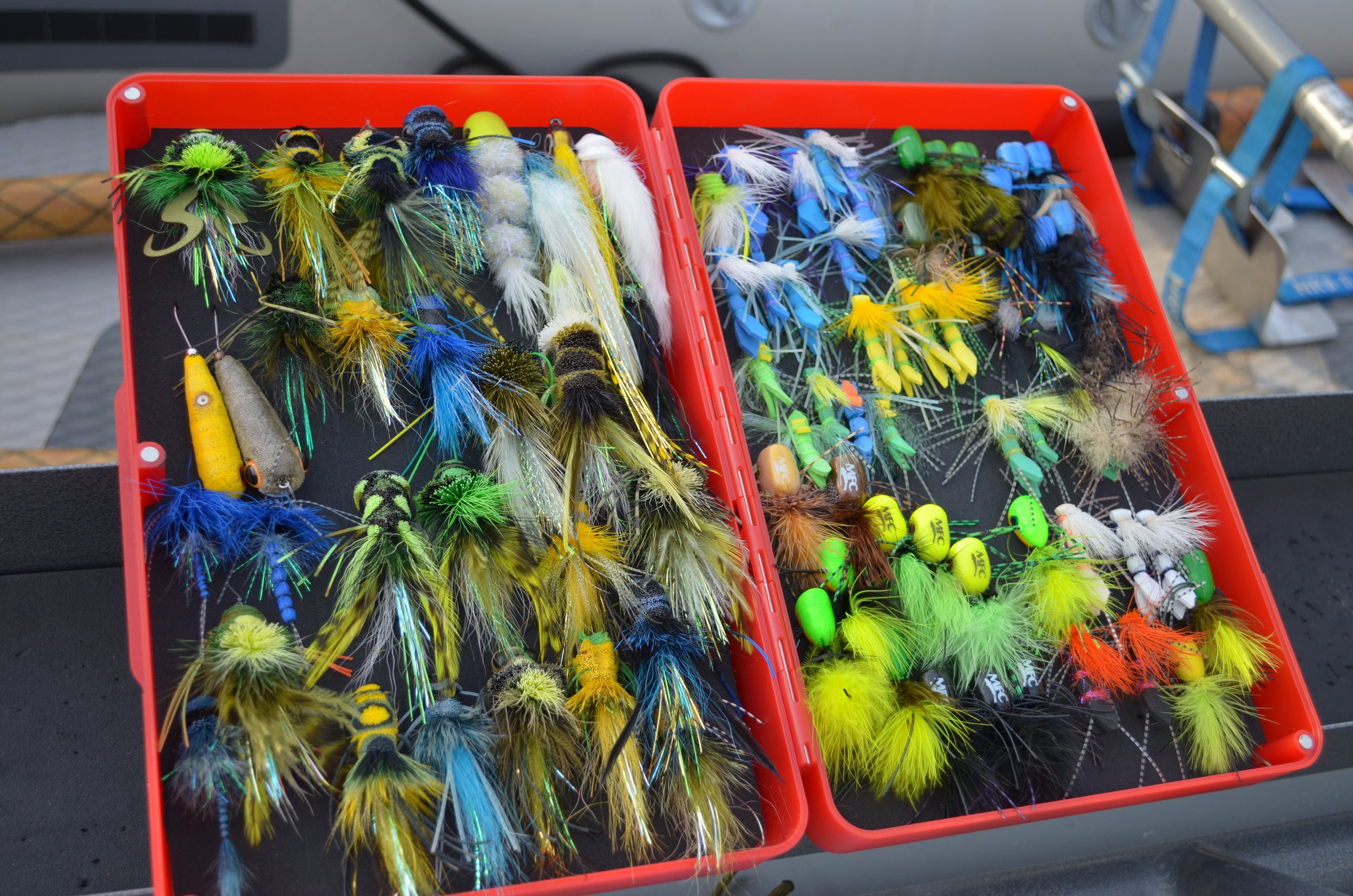Topwater Flies Explained: Part II
A good topwater box will have multiple different kinds of flies
In our previous article, Topwater Flies Explain: Part I, we discussed popper, baitfish poppers, and my favorite, divers. We mentioned the how, when, and why of each fly along with the differences between them. In this article, we will be doing the same, however, we will be covering sliders, wiggle patterns and dead drift patterns. While we are still talking about top water flies these flies are more subtle and require slightly different tactics.
Sliders are a great option when fish are more weary of big loud flies.
First up is the slider. There are a variety of types out there ranging from boogle bug sliders, sneaky petes, and my favorite, the deer hair slider. What differentiates sliders from poppers are their round, cylindrical faces. When stripped across the water, they do not make a loud noise. Additionally, they do not dive deep into the water like a diver. When fished correctly, they slide across the surface of the water, creating wake, and signaling to fish below.
Smallmouth bass love yellow bugs thrown under limbs and bushes.
The most effective way to fish these flies is with a floating line and a long leader. These flies work great when the water is low and clear and the fish are more weary.
Ole Mr. Wiggly is one of my favorite patterns to throw on top water for catching smallmouth bass
Wiggle patterns are a broad category I use when referring to flies that float on the surface of the water and have a lot of wiggle action. Most often these flies have many rubber legs, marabou, or other similar materials to impart subtle action. My favorite fly in this category is Ole Mr. Wiggly. These flies are tied in many different colors to imitate a variety of terrestrial insects ranging from dragon flies, grasshoppers, spiders, or damsel flies. The key to this fly are the rubber legs which wiggle in the current and create a small wake that is irresistible to fish.
MFC Bombshell Popped make a great crossover fly from small popper to a deadlift wiggle pattern. A very effective combination.
These flies are best fished on a floating line with a long leader. Pitching these flies close to banks, logs, and other structure will help you find success. Allowing these flies to pass under limbs and swing at the end of the drift are deadly combinations.
Dead driving top water bugs is often over looked by fly fisherman when targeting smallmouth bass. Don’t leave home without them!
Lastly, the final category of top water flies I like to use I call dead drift patterns. This category is slightly redundant, because any fly can be dead drifted without any action. The difference in this category, however, is being intentional about not imparting any action. Large mayflies, like Hex patterns fall into this category, along with other larger “trout” flies. One of my favorite patterns in this category is a large damsel fly I like to tie with an extended deer hair body. These flies work best with minimal to no movement, like many trout patterns. The best place to let these flies float include bubble lines, along log jams, under tree limbs and near bushes. Long leaders and floating lines work best for these flies. Be diligent when fishing these. Often times the largest bass will sip under the surface and if you’re not paying attention, you could miss your next trophy bass.
Often times, a simple dead drift will seal the deal on a weary smallmouth bass.
I hope you enjoyed these two articles explaining the differences in top water flies, how I like to fish them, and when to do it. While summer is coming to an end, the fish are still looking up and these flies are excellent ways to close out the top water season.
If you’d like to book a last minute trip before fall or if you have any questions, please feel free to email or call me to get on the books.
As always, I hope you get to enjoy the water and outdoors safely with family and friends.
Cheers,
Allen








